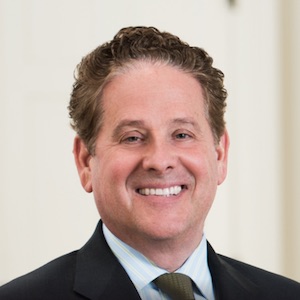Towards a Better Patent System, Part Two: USPTO Fees
“Since it is the practice of some large companies to abandon applications or issued patents – sometimes in large numbers – before the first maintenance fee comes due, under the current fee schedule, the costs of examining these patents will be unfairly shifted to other patentees.”
In my previous article, I made a modest proposal for improving one aspect of patent examination by requiring applicants to identify support in the specification for new and amended claims. That suggestion was premised on my firm conviction – based on 34 years at the United States Patent and Trademark Office (USPTO) in roles ranging from examiner to Commissioner for Patents – that we must improve the quality of examination if we want the United States to remain on a par with patent offices in other leading jurisdictions such as Europe, Japan and China. I believe that the best, and perhaps only, way to do this is to move toward viewing examination less as an adversarial process and as more of a shared responsibility in which applicants work in partnership with examiners to improve examination.
Continuing with that theme, I would suggest that the current fee-adjustment process presents another opportunity for applicants and the Office to work together to improve examination and strengthen our nation’s patent system. I recognize that the USPTO has already initiated a process to increase fees, some significantly, by January 2025. Although I don’t necessarily love some of the specific proposed fee increases, I’m more concerned with the increases that should have been proposed but weren’t.
Higher Up-Front Fees are Fair
While the Office has data indicating that it will need more funds by 2025 to conduct its business, there are ways to increase funding fairly that would also place the Office on more secure financial footing going forward. One of the significant challenges the Office faces relates to how heavily examination services are subsidized using maintenance fees. Under the current fee schedule, the combined filing, search, and examination fee for large entities totals less than $2,000, but the cumulative operating costs per patent are around $6,000. It is not until the payment of the second maintenance fee, after seven years, that the Office reaches the break-even point. This means that an application that is abandoned just before issuance results in a net loss to the Office of around $4,000, and an issued patent that is abandoned prior to payment of the first maintenance fee results in a net loss of around $3,000.
Since it is the practice of some large companies to abandon applications or issued patents – sometimes in large numbers – before the first maintenance fee comes due, under the current fee schedule, the costs of examining these patents will be unfairly shifted to other patentees. This suggests that applicants, and especially large, sophisticated applicants, should be charged higher fees up front to ensure they pay their fair share and to prevent them from gaming the system. And, more generally, applicants should be paying more in order to fund better examination that will produce higher quality patents that their owners can have confidence will hold up in litigation. Although the Office is proposing some increases in early fees, in my view, they are not enough either to address the problems and potential abuses enabled by subsidizing examination with maintenance fees or to significantly increase the quality and accuracy of examination.
Incentivize Improved Applications
I also believe the Office should consider fee changes that would provide incentives for applicants to do things that would help improve examination. For example, they should consider a fee decrease for searched applications that provide information disclosure statements that help the examiner guide her search. Similarly, the Office could consider a fee reduction for patent prosecution highway treatment and for applications that have a search report on a related case in Global Dossier, both of which require less examiner time. The Office could save time in those circumstances, and if they are interested in encouraging behaviors, these are the types of actions that the Office should support with fee reductions.
Share Data
Finally, I think the Office needs to lead a conversation about the cost of drafting and prosecuting an application. Since the quality of the application affects the examination, the Office should collect and publish information regarding the costs of drafting and prosecuting a quality application in different art areas. Such information might help companies understand what they need to pay for these services and reduce the number of low-quality applications that are the result of low-ball drafting and prosecuting charges. Counterintuitively, I believe that higher application fees might actually help drive large applicants to do a better job of drafting up front instead of filing sub-standard applications and then abandoning them or relying on continuations.
Stay tuned. My next article in this series will have even more proposals to consider.
Robert Stoll
Robert Stoll is a Partner and Co-Chair of the IP Practice Group at Faegre Drinker Biddle and Reath and a former United States Patent and Trademark Office (USPTO) patent commissioner […see more]







